
Toronto Auto Show 2014 brings controversy & concepts
The Canadian International Auto Show kicked off in Toronto yesterday morning with the sort of controversy and confrontation that doesn't usually set the tone for our annual celebration of all things automotive. It began when Fiat-Chrysler CEO and Toronto native Sergio Marchionne gave a keynote speech at the press preview that was a pained mea culpa, apologizing for the mistakes that sent the auto industry in general and Detroit's big three automakers in particular into a frenzy of bankruptcy and bailouts six years ago.
Marchionne was going to be sorry for a lot more by the time he left the stage. After enumerating the industry's many errors and hopefully pointing to the ways that, reorganized and refinanced, they were going to do a better job, he found himself facing vaguely hostile questioning from reporters suddenly incensed at the ancient fact that car factories in Ontario are here because of sweetheart deals cut with governments on all three levels.
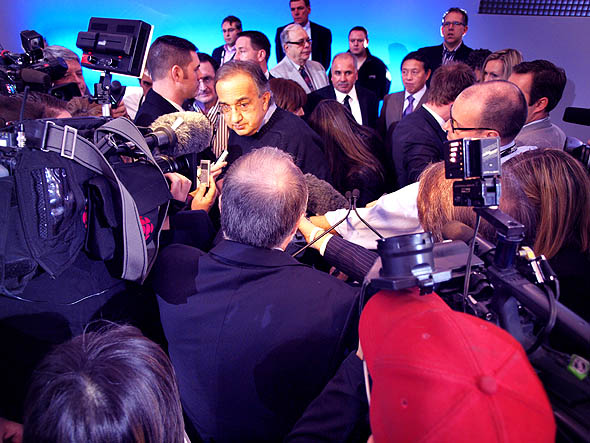
Recent news that Fiat-Chrysler was negotiating with federal and provincial governments to expand their operations in Windsor and Brampton had put the press on Marchionne's scent, and he found himself trapped in a scrum of reporters long after Chrysler had presented their newest cars and the rest of the auto media had moved on to look at the latest models on display elsewhere in the Metro Toronto Convention Centre.
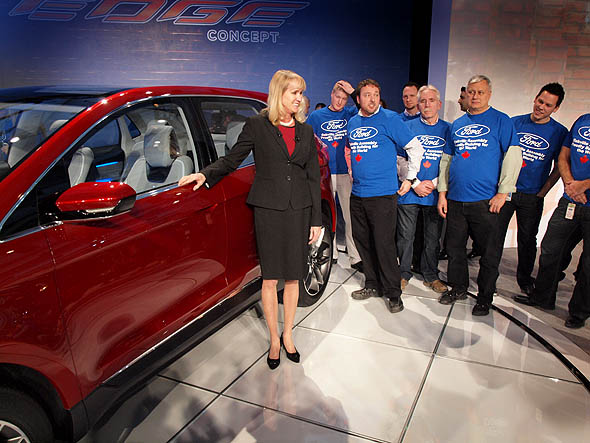
The uneasy state of auto manufacturing in Ontario was underlined later in the day when Ford Canada president Dianne Craig unveiled their Edge crossover concept model, and proudly announced that the car - when it was ready for production - would be produced at the company's Oakville plant, nervously pushing aside persistent rumours that Ford, like GM in St. Catharines and Oshawa, was eyeing cheaper places to build cars, and that the imminent expiry of labour contracts might give them an excuse to pack up and leave acres of facilities and thousands of jobs behind.
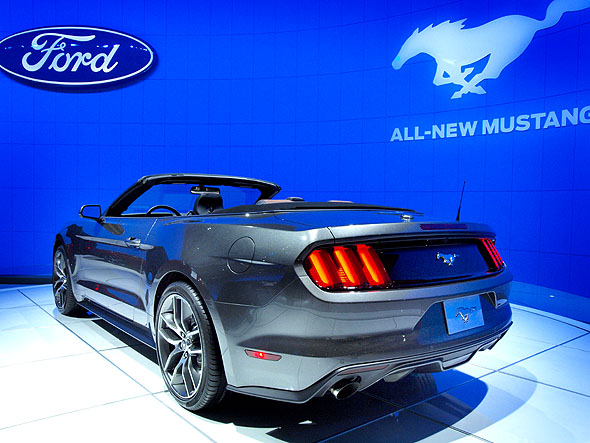
This year's auto show should have been owned by Ford. After sitting on the sidelines last year while Chevy unveiled their new Corvette and Chrysler rolled out the latest Viper, Ford was expected to take back the spotlight this year with the sixth generation of their iconic Mustang. The car's piecemeal rollout, leaked for months in the auto press and unveiled at several auto shows before Toronto, meant that instead of being centre stage the new Mustang was showcased off to the side, months before anyone can actually buy one.
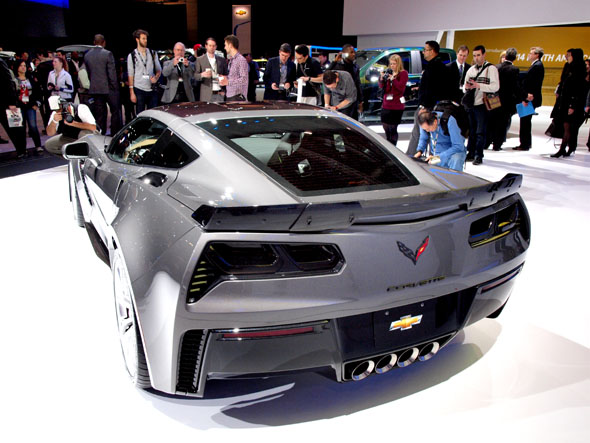
Chevy coasted into the auto show on the fumes of last year's big reveal, putting the ZO6 version of their new Corvette in the centre of their display, next to another performance car, their Z28 Camaro. Both GM and Ford had new trucks to show off, but it goes without saying that even the mid-sized Chevy Colorado looked big-shouldered and bulked out, and that trucks aren't likely to slim down any time soon.
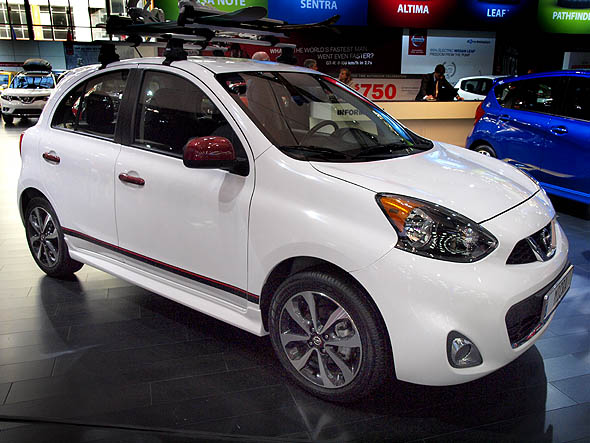
It was Nissan who ended up stealing the show with a pair of attractive concept cars and the announcement that their Micra subcompact, a common sight in Europe and Asia, would be sold in Canada (but not the U.S.) for the low, low price of $9,998, undercutting their own Versa, which was previously the cheapest new car on the market, and putting up stiff competition to Mazda's 2 and 3 and the Fiat 500. Sold with a range of extras to pump up the price, it's the latest effort by an auto maker to lure young buyers who either can't or won't enter the car market - a frightening prospect for carmakers who once relied on a fresh new crop of drivers with every sixteenth birthday.
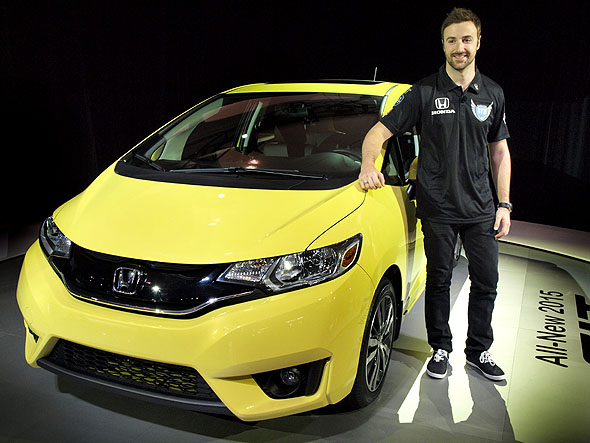
Honda took aim at the youth market as well with a refreshed version of their Fit subcompact, pulling in Indycar driver and local boy James Hinchcliffe for the car's reveal. I'm a big fan of subcompact "city cars" and hope that they find a bigger market here, if only so automakers will put more effort and enthusiasm into their design, and as I wondered why they seem like such a hard sell here (and an even harder one in the U.S.) I came across this relic hidden away in the lobby of the convention centre.
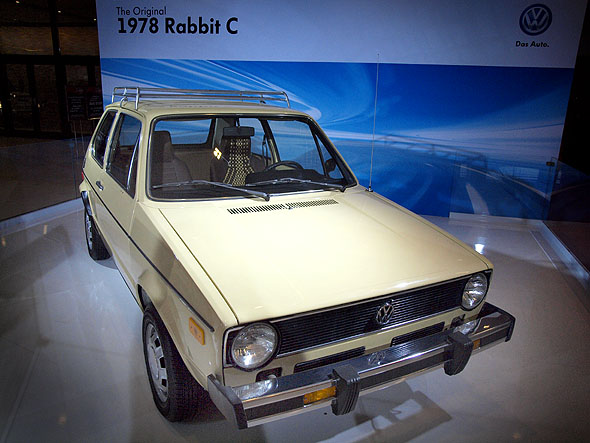
It's VW's first generation Golf, sold here as the Rabbit, and a classic entry-level car from back when Volkswagen actually made cheap cars young people could buy. Boxy and basic, it gives off more '70s vibes than a Fleetwood Mac reunion tour, but it was fun to drive and simple to service, and stood out on the road next to whatever bloated sedans and underperforming onetime muscle cars ruled the roads back when Carter was president. You can't help but admire its austerity, especially when you compare it to its descendant, the new Golf GTI VW unveiled at the show.
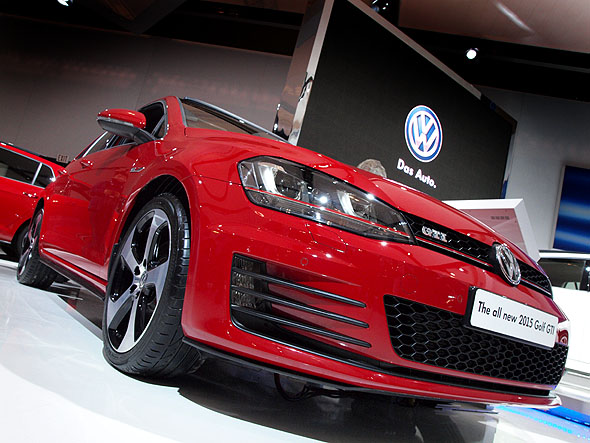
The other demographic trend on display at the show was sedans - four-door cars from mid-range to luxury prices aimed at older buyers who want some comfort as well as a lot more car wrapped around them, and who can be upsold on the latest auto-parking and driving assist technologies that the industry is developing at great cost. Infiniti put their Q30 concept car centre stage, finished in a dusky champagne pink with a torrent of liquid lines flowing back from its grille, neither of which will probably be there when the production model hits the showroom.
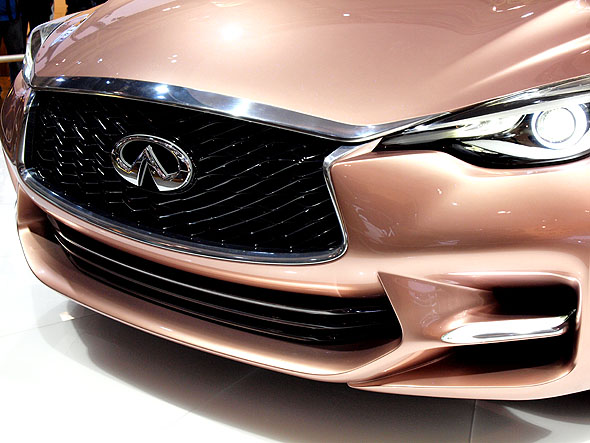
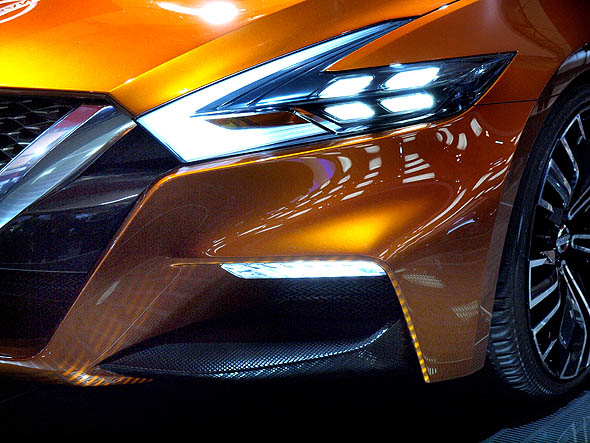
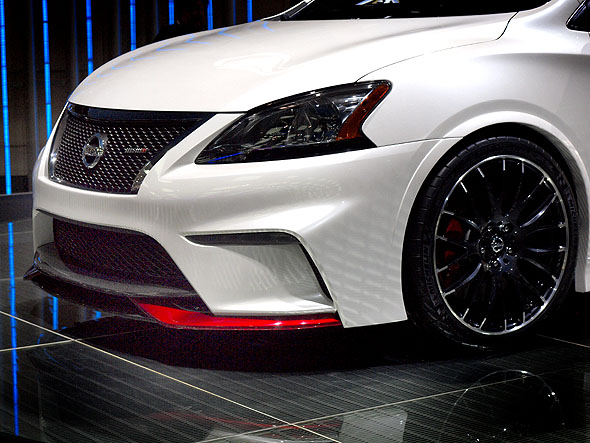
Nissan's pair of concepts were also sedans; their Sport Sedan concept featured the best headlights in the whole show, while the Sentra Nismo concept, finished in white with black accents, thrust a bright red splitter out from under its grille. Like all the best features on a concept car, they probably won't be there when the production model hits the streets.
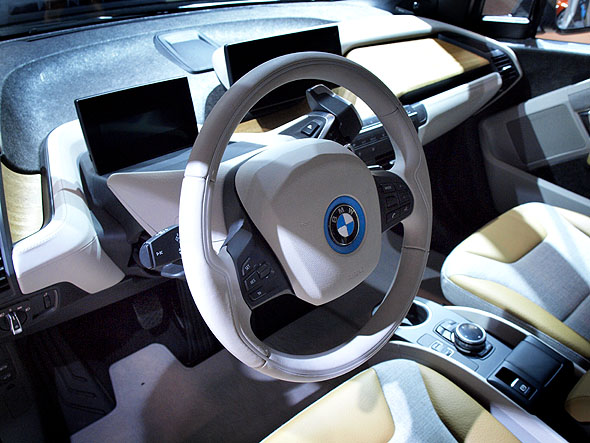
Not all concepts end up blanding away on their way to the factory floor. Last year I was dubious when BMW presented its i3 and i8 concepts, but was reassured that they intended to make the cars with as many of their futuristic design features as possible. The production i3 that BMW put on display this year - another car targeted squarely at the millennial market - actually resembles last year's concept, right down to the dashboard with its wooden cutting boards and tablet screens that make the interior feel like an upscale sushi joint.
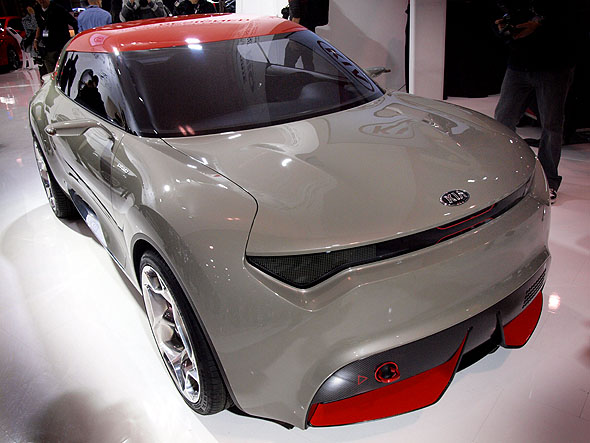
What was missing from Nissan's booth was the IDx concept cars they'd shown at the Detroit Auto Show last year, based on the much-loved Datsun 510. But it was OK, because Kia ended up blindsiding us with their Provo concept, which also evoked the same era of cheap, boxy, rally-raced, rear-wheel drive cars. Imagined as a hybrid, it looked way too good to imagine it making it to production with a fraction of its flair intact, if it makes it to the streets at all.
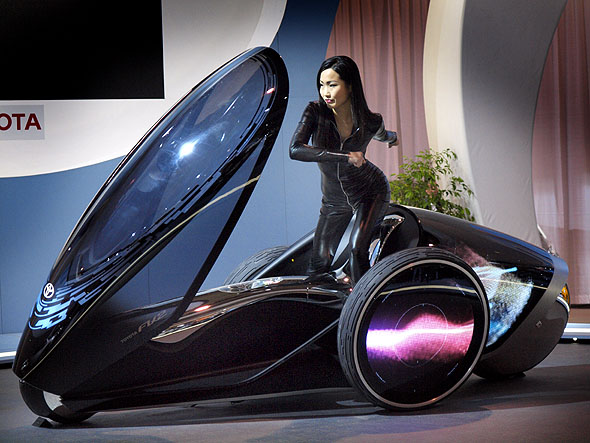
For the second year in a row, Toyota showed up without much in the way of new car models, so they decided to treat us to another concept from the future. Like last year's Fun Vii, the FV2 is covered in LED panels that put on a show, but the petite little vehicle asks us to imagine a world where the steering wheel and accelerator are apparently obsolete. As demonstrated by a model clad in Irma Vep leathers, Toyota's FV2 doesn't even bother with a seat, with steering controlled by gestures that make the driver look like a mime on a skateboard, an idea less concept than wild fantasy.
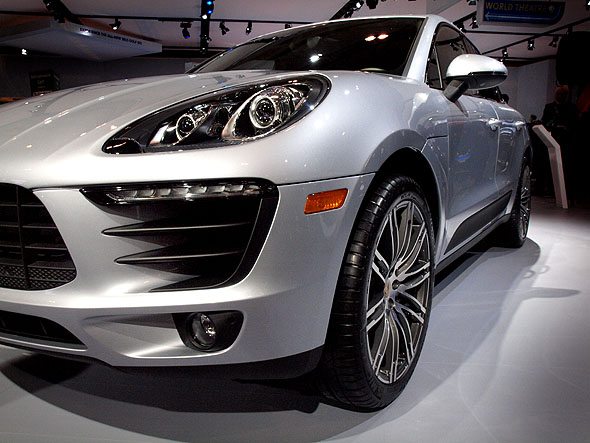
The return of Porsche to the main floor of the auto show after a five year absence was also big news - a sign of the industry's reviving health, perhaps, though it came with the unveiling of their new crossover, the Macan, which will likely be thick on the ground at private school drop-offs and in the parking lot at Pusateri's.
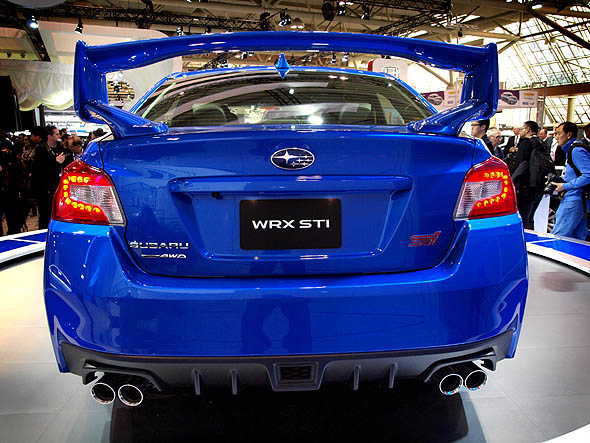
Besides concept cars, auto makers have another bit of car show razzmatazz they can pull out to pull crowds: race car. Infiniti gave a prominent place to Red Bull's latest F1 car on their showroom floor, as did most other manufacturers with a motorsport division or a major team sponsorship. Subaru has fielded championship-winning rally teams in the past, so their new WRX STI matched the car's signature hood intake with a massive rear wing. Not to be outdone, Porsche gave pride of place on their showroom pedestal to the latest 911 GT3 Cup, which seemed intent on giving Subaru wing envy.
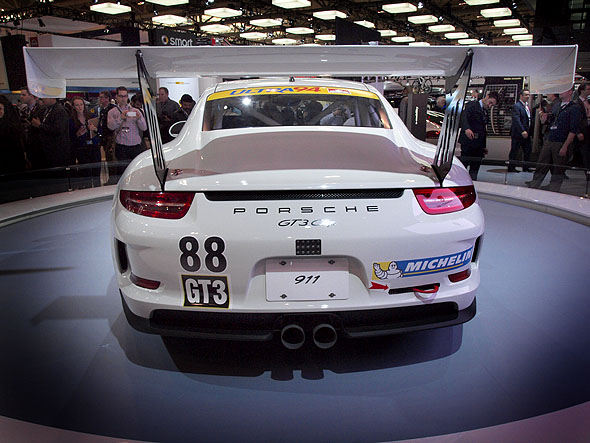
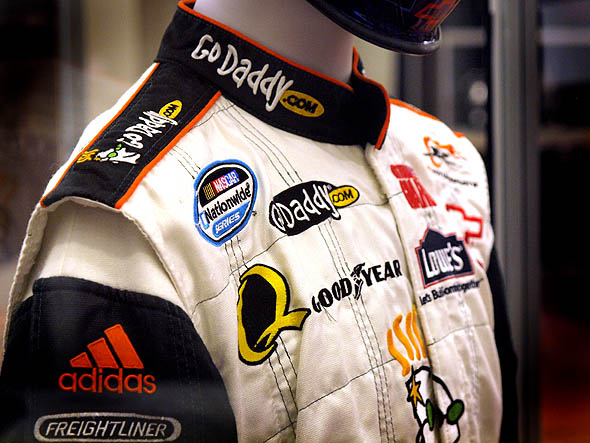
More racecar could be found in Canadian Tire's tribute to driver Ron Fellows, whose career has bounced back and forth between sports cars and NASCAR for twenty-five years. The Windsor-born racer is saluted with a room full of trophies, cars and racing suits, just across from the AutoExotica display where high-end coupes and luxury sedans share the floor with supercars like the new McLaren P1, which got the full reveal even though only 375 are being made, and all of them have been sold - seven in Canada, apparently.
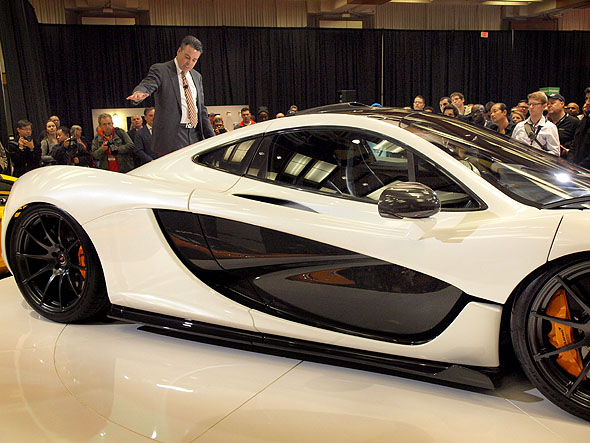
This is the room where the Ferraris, Aston Martins, Bentleys and Lotuses live, and where Maserati is showing off its new Ghibli sedan, launched recently with a Super Bowl ad. No car freak would miss this room, even though the world of high-end autos is often a taste-free zone. And when you know how much they cost, you have to wonder why anyone would do something like this to a Lamborghini.

At the far end of the show, past the concepts and the rich men's toys, the Cruise Nationals show off the real works of art - the concourse quality restorations the literally glow with the effort and passion that's gone into them. There are hot rods and cruisers and elegant monsters covered in chrome, dignified or outlandish depending on their owner's muse, and it's unlikely anyone will ever pay anything close to what they're worth in hours and effort.


The Cruise Nationals are paired this year with Mopar Muscle, a display of the best performance cars Chrysler made between Nixon's debate with JFK and his presidential resignation. There are a lot of great cars here, but the crown jewel is the outlandish Superbird that Plymouth used to tempt Richard Petty back from Ford. It's an insane car, which no one on or off a NASCAR track would try to make today, but it has style and audacity that's scarce today. And while we're talking about wings - this is a wing.

Latest Videos
Latest Videos
Join the conversation Load comments







